This Trend Is Going to Reshape New York City – Let’s Talk About Commercial to Residential Conversions
Posted on December 9, 2022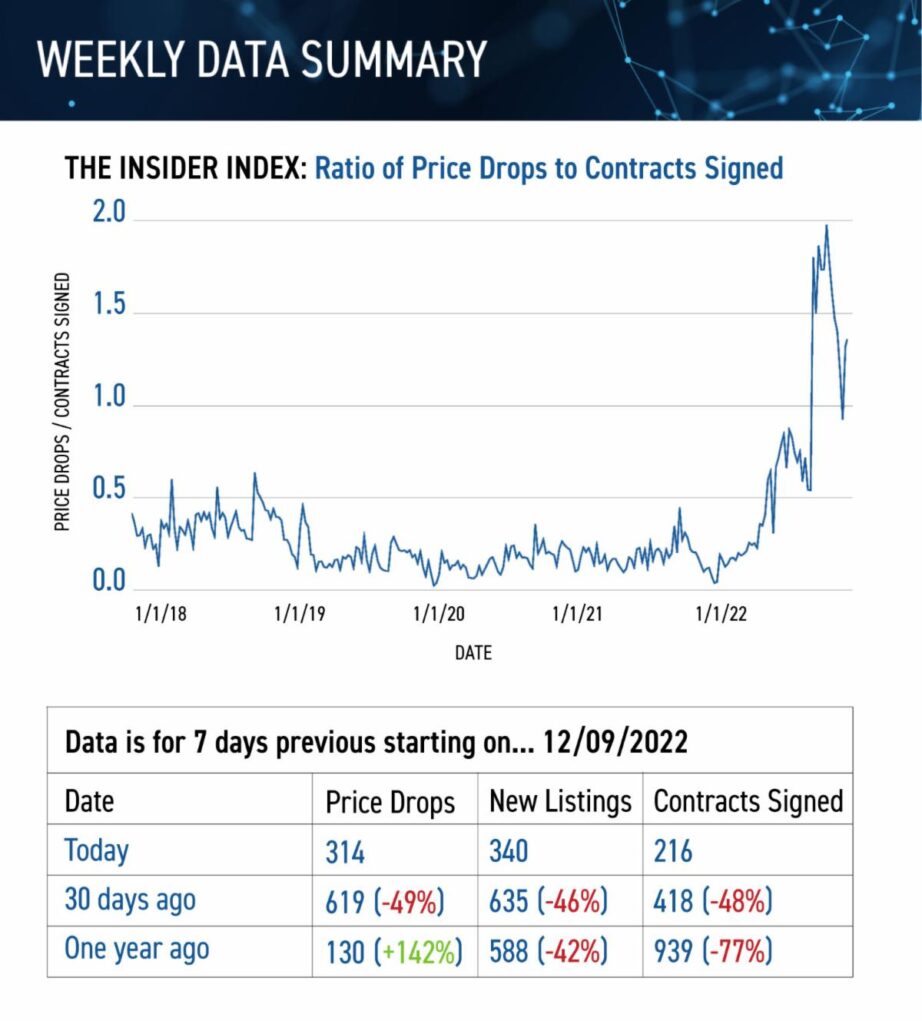
True, Morgan Stanley and Goldman have successfully gotten people back to the office M-F.
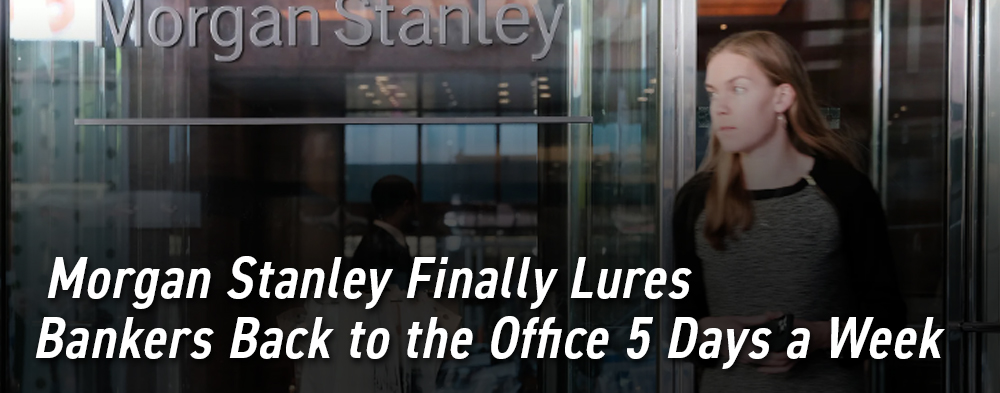
They seem to be in the minority, however. Kastle Systems, which tracks security swipes at big office buildings, shows New York City has not even recovered to 50% of pre-pandemic office occupancy (forget that 11/23 data point in the graph below; that was Thanksgiving week).
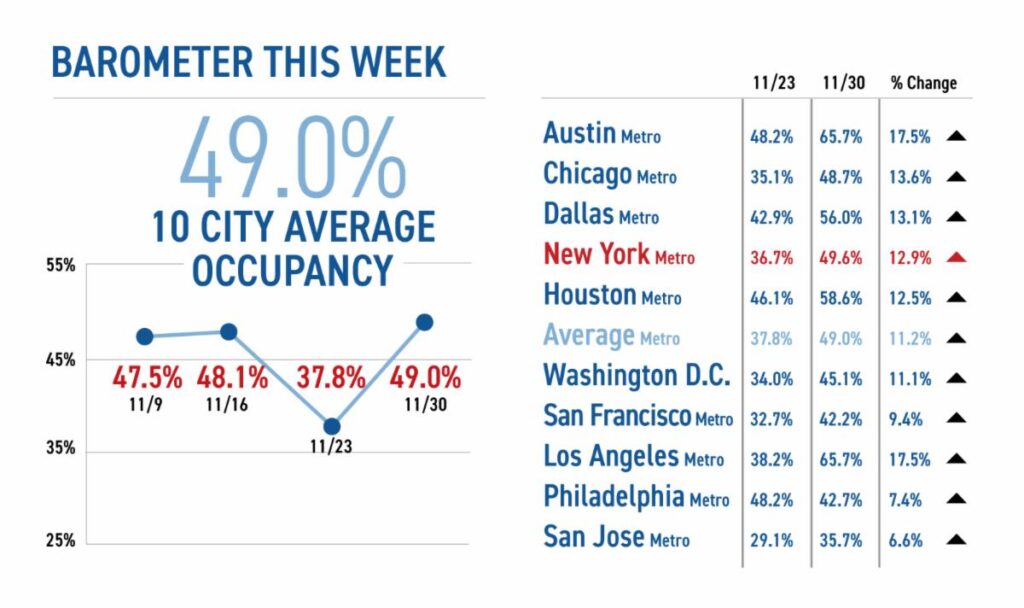
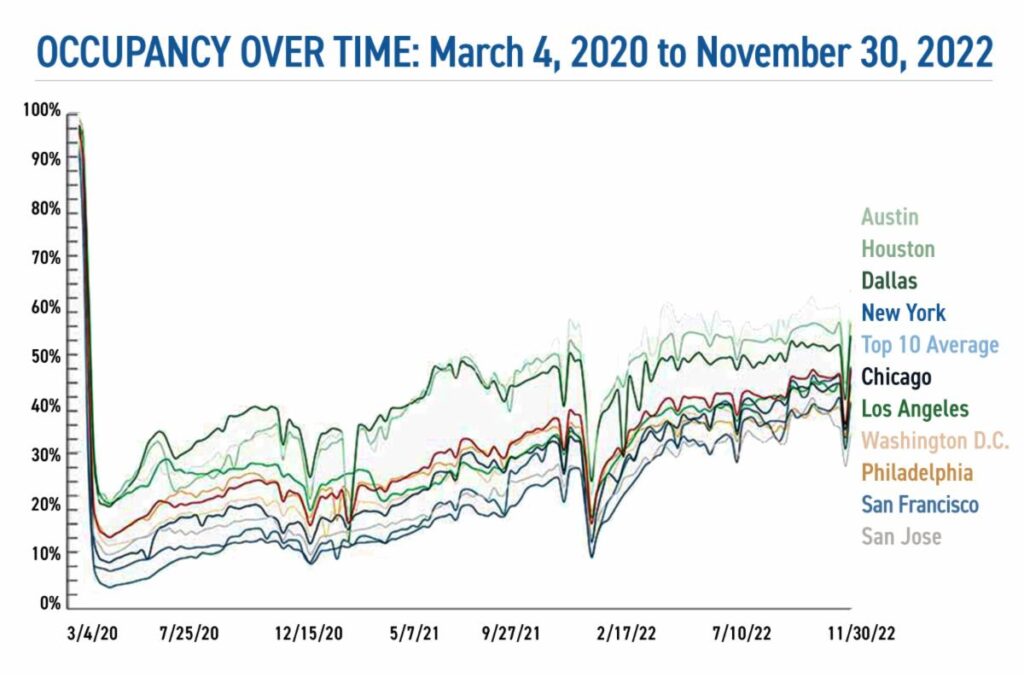
It has been my premise since mid 2020 that work from home (WFH) was going to be a relative flash in the pan, and I’ve been wrong. The trend is slowly normalizing but only oh-so-slowly.
Even if I am eventually right, and WFH is not a permanent thing but it takes a few more years to revert to the historical norm, that will not be fast enough for owners of office buildings in New York CIty. Office buildings are financed with debt. Debt is paid with rent. When office buildings stand vacant, things go pear-shaped for the owners rather quickly.
UC Berkeley published a study recently showing cell phone data usage in New York City is only 78% of pre-pandemic levels which is obviously not great.
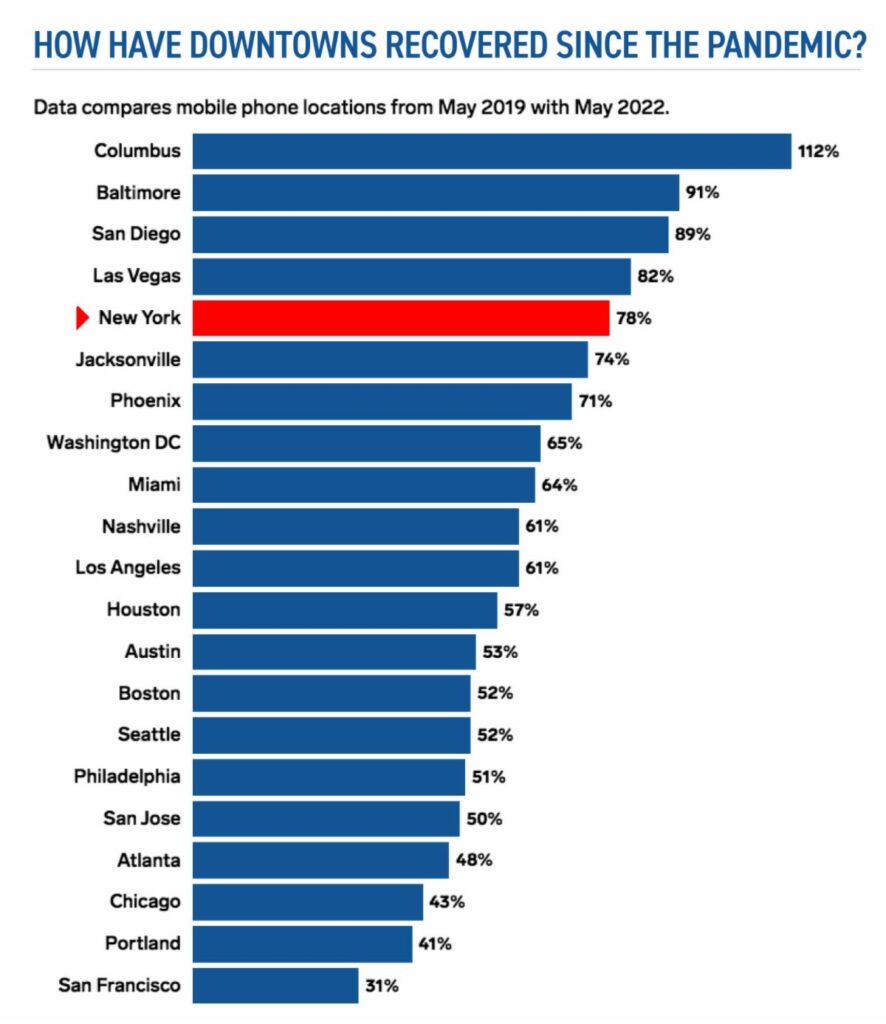
More tellingly, the MTA’s usage data shows that the subways are barely back to 60% of pre-pandemic ridership levels.
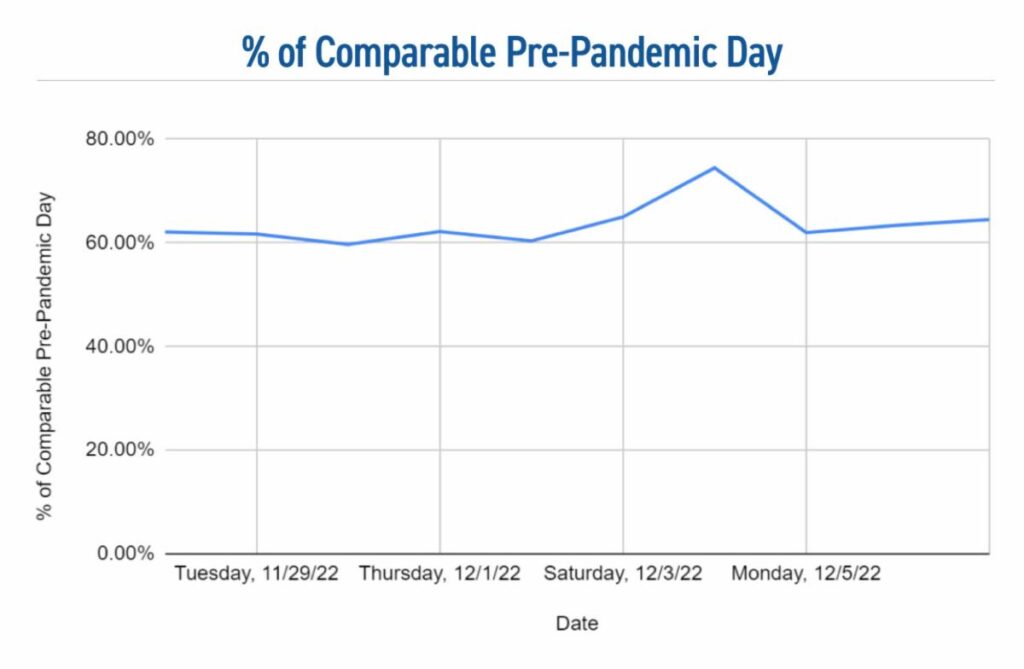
All of this non-commuting, non walking around midtown and avoidance of offices is having an effect on office landlords.
Have a look at YTD stock prices for 4 NYC office REITs (investment companies that invest in NYC office buildings). Not pretty.
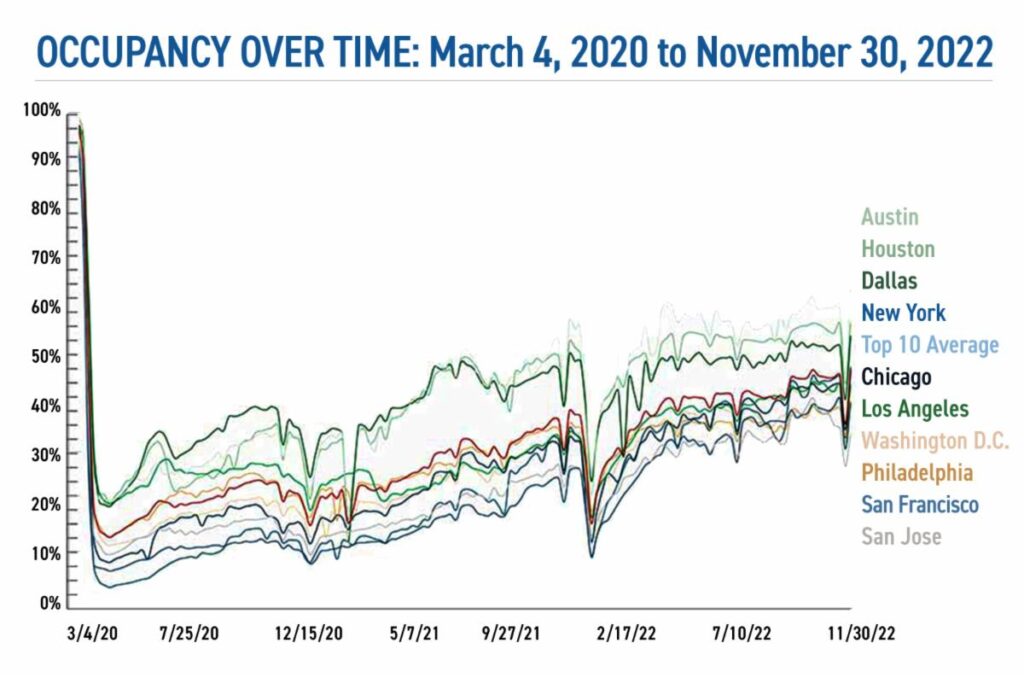
No wonder Bloomberg reported on Monday that Silverstein Properties is raising $1.5 billion to purchase distressed office buildings and convert them to residential properties.
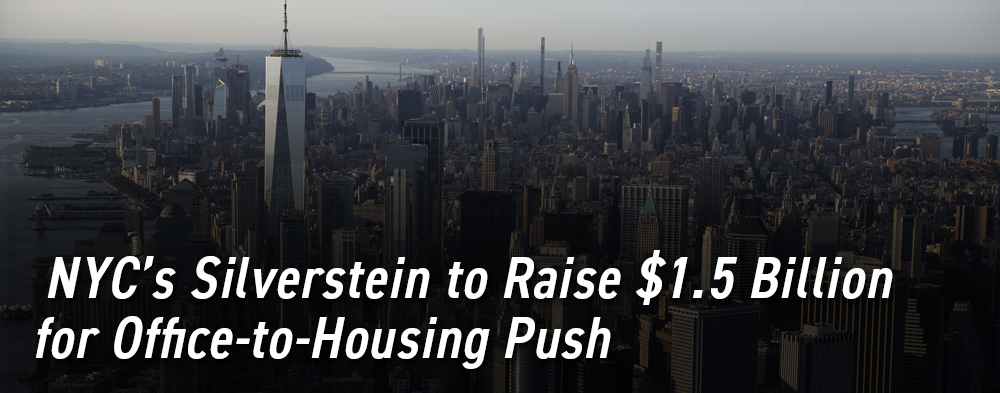
The Financial District is a fascinating study in urban renewal and is a model for how Midtown could be dramatically revitalized. In 2000, there were just under 40,000 residents living in 20,300 housing units in the FiDi (according to that year’s Census). Today there are over 82,000 people living in 44,300 units. That’s a pretty big jump.
In 2005, when I started in this business, the FiDi was kind of a non-neighborhood. There was one halfway decent grocery store, Les Halles, Fraunces Tavern and… that was sorta it. Now you have the Oculus, Brookfield Place, Stone Street, a bajillion great restaurants, 9/11 Memorial, iPix, and it feels like a real nabe.
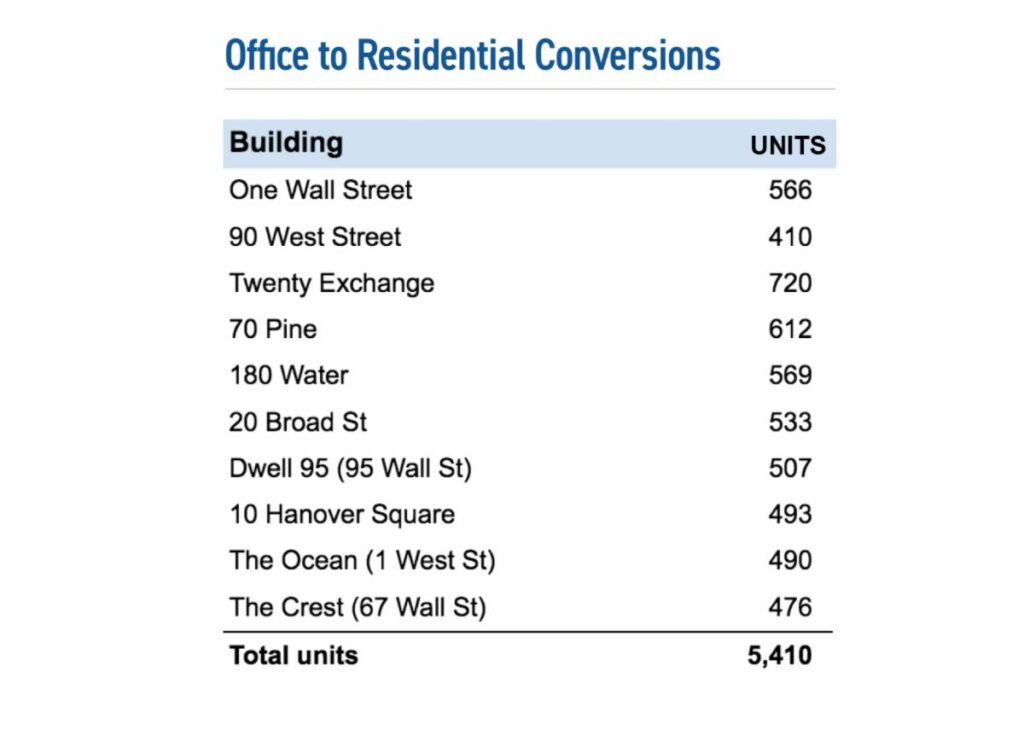
I am not saying that Midtown is starting from such a desolate place. What I AM saying is that for the last 10 years, it has felt rather old-in-the-tooth commercial with second rate retail and kind of neither-here-nor-there after business hours. A revitalization would be welcome, in other words.
Of course this will take political will to accomplish because of the regulatory hurdles. To wit:
- Tax subsidies such as 421-G (proposed but not enacted)
- Zoning (many buildings are in manufacturing zoned districts, which means they cannot convert to residential as-of-right)
- Pricing: with interest rates up, inflation up, and no tax abatement, developers need to keep acquisition prices at or below $400/sf for projects to be economically viable. This will require capitulation by current landlords (this appears to happening, however).
- Larry Silverstein -Silverstein Properties
- Steve Roth – Vornado Realty Trust
- Gary Barnett – Extell Development
- Jerry Speyer – Tishman Speyer
- Stephen Ross – Related Companies
- Jeff Blau – Related Companies
- Don Peebles – Developer
- James Dolan – Madison Square Garden
- Implement a new 421A-like tax break specifically for commercial to residential conversions
- Provide low cost loans for these projects
- Waive onerous zoning requirements (such as parking) for these conversions
There are also structural issues:
Buildings with large floorplates do not lend themselves to appropriate fenestration for residential units.
The Insider Prescription
Costar has reported that California has allocated $400 million to convert commercial buildings to condos (yes, already signed into law by Newsom). This is part of a $2 billion appropriation to build more affordable housing.
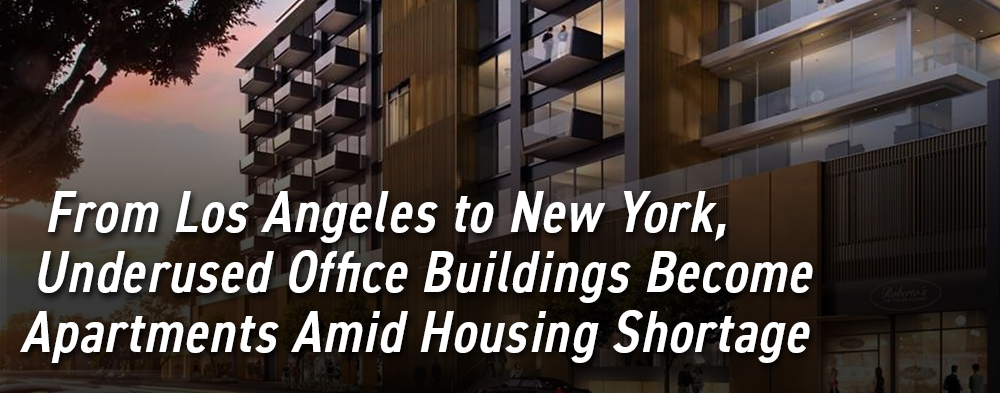
New York’s governor would do well to pay attention, especially given the roster of real estate A-listers that donated to her campaign, including:
This is urgently what should happen:
Yes, this would cost money. The alternative, however, is worse: the hollowing out of our business districts without the urban renewal that could eventually replace those commercial tax receipts with residential ones.
Have a great weekend, everyone!

